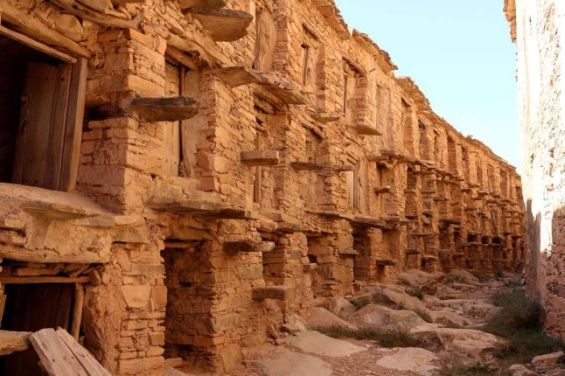In a detailed travelogue, two independent researchers from Morocco and the United States documented their challenging search for arraten, indigenous legal contracts from the Atlas Mountains in Morocco. During their journey to uncover these artifacts, written on paper, argan wood, or preserved in reeds, they made a significant discovery.
Hamza Elbahraoui, a Rabat-based antique dealer, and Igor Kliakhandler, a former mathematics faculty member at Michigan Technological University, discovered hundreds of thousands of arraten—documents used by the Amazigh people to record deeds and legal records, spanning over 400 years.
In their travelogue, published in August in a peer-reviewed article on Taylor & Francis, the researchers estimate that the number of documents they discovered, which remain in situ (left where they were found), is likely to exceed 5,000 items. This is in addition to their private collection of 4,000 arraten.
The adventure began after Elbahraoui, the antique dealer, purchased «a large basket of antique tribal items». Within that basket, he stumbled upon what he described as a «curious artifact»: «a plate of argan wood».
 Typical scenes of abandoned arraten manuscripts in an agadir. / Ph. Hamza Elbahraoui & Igor Kliakhandler
Typical scenes of abandoned arraten manuscripts in an agadir. / Ph. Hamza Elbahraoui & Igor Kliakhandler
«It was about palm-sized, with both sides covered in hand-written Arabic letters, apparently in the old Maghrebi Arabic language. Through consultations with several antique dealers, it transpired that the plate is an old legal deed of the Anti-Atlas Mountains Berbers», the study explained.
Intrigued by this find, the Rabat antique dealer embarked on a hunt for arraten, trying to purchase similar pieces through his sources. During this search, he met Kliakhandler, who was equally intrigued and joined the team.
Together, after unsuccessfully searching for more arraten in antique shops and collections, they resorted to traveling to the Anti-Atlas. There, they decided to visit unique constructions, igudar or agadir—ancient bank systems created by Amazigh families to store their valuables, including legal documents.
Arraten hidden in agadirs
During their journey, they visited around 30 agadirs, explored 24 of them, and inspected over 500 chambers where inhabitants stored their valuables. In some of these chambers, the researchers discovered piles of arraten—both wooden and paper ones—stored in jars or scattered on the floor. Given the condition of some agadirs, these arraten were covered in dust, and some were even impossible to reach due to the crumbling state of the chambers.
«We explored one very hard-to-reach, ruined Agadir… We discovered two rooms with large amounts of wooden arraten, reed tubes, and paper artifacts. But two further rooms defied our expectations. They were full of bags and vessels, with wooden, reed, and paper artifacts, and a small pile of paper artifacts at the entrance. Each room contained, in our estimation, no less than 800 pieces».
Unable to inspect all 550 agadirs in Morocco, the researchers estimate that the Atlas Mountains may hold between 25,000 and 100,000 cellars, possibly home to up to 500,000 arraten.
 Typical scene inside of an agadir. / Ph. Hamza Elbahraoui & Igor Kliakhandler
Typical scene inside of an agadir. / Ph. Hamza Elbahraoui & Igor Kliakhandler
«We estimate that the entire body of documents written on wood in the Anti-Atlas Mountains is likely to be no less than 100,000 pieces and may very well exceed 500,000. In addition to this, between 40,000 and 150,000 paper documents likely exist», they explained.
The researchers want these arraten to be recovered scientifically, with proper documentation and authorizations, given their value to Amazigh families. However, they plan to offer their private collection to a suitable institution.
In their description of these old manuscripts, the researchers explain that they are made from wood and paper. The arraten artifacts, many of which have historical stamps, offer insights into the legal, social, and economic life in the Atlas Mountains over the past 400 years. The preservation and study of these documents are crucial for understanding Amazigh heritage.





 chargement...
chargement...












